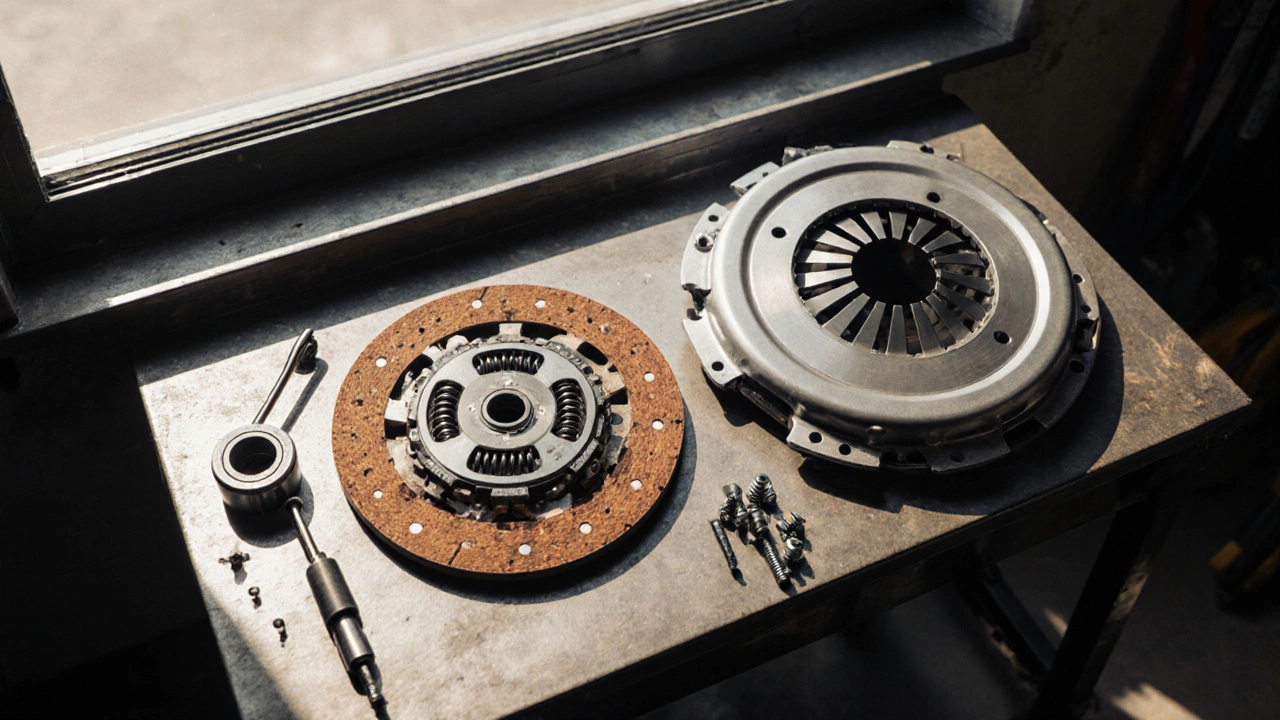
What’s Inside a 2‑Piece Clutch Kit? Complete Parts Breakdown
Learn exactly what components come in a 2 piece clutch kit, their functions, price range, installation steps, and when to choose it over a 3 piece kit.
When you press the clutch pedal, something hidden under your hood does the real work: the pressure plate, a spring-loaded metal assembly that clamps the clutch disc against the flywheel to transfer engine power to the transmission. Also known as a clutch cover, it’s the force behind every smooth gear shift in a manual car. Without it, your engine spins uselessly—no matter how hard you press the pedal.
The pressure plate works with two other key parts: the clutch disc, the friction-lined component that connects engine to transmission, and the flywheel, the heavy rotating disc bolted to the engine crankshaft. Together, they form the clutch system. If one part wears out, the others suffer. A worn pressure plate doesn’t just slip—it can warp the flywheel, burn out the clutch disc, or even damage the transmission input shaft. That’s why mechanics always replace the pressure plate when doing a full clutch job.
You won’t notice a failing pressure plate until it’s too late. At first, you might feel a spongy clutch pedal, or hear a squeaking noise when you press it. Later, gears grind when shifting, or the car refuses to move even with the pedal fully released. These aren’t just "clutch issues"—they’re pressure plate failures. High-mileage cars, heavy towing, or aggressive driving speed up wear. A stock pressure plate on a daily driver might last 100,000 miles, but if you’ve upgraded your engine or drive hard, it could fail before 60,000.
Replacing it isn’t a DIY job for beginners. It takes lifting the car, removing the transmission, and using a clutch alignment tool to avoid misalignment. But if you’re buying a used car or sourcing parts from auction, knowing what to look for saves money. A cracked pressure plate, uneven spring tension, or warped friction surface means you’re buying trouble. Always check if the pressure plate matches your flywheel’s bolt pattern and clutch disc size. Don’t assume "it fits"—many aftermarket parts look right but don’t engage properly.
The posts below cover everything you need to know about clutch systems, from spotting early signs of wear to choosing the right clutch kit for your car. Whether you’re fixing a worn pressure plate, upgrading for more torque, or just trying to understand why your clutch feels different, you’ll find clear, no-fluff guides here. No theory. No jargon. Just what works on UK roads.

Learn exactly what components come in a 2 piece clutch kit, their functions, price range, installation steps, and when to choose it over a 3 piece kit.